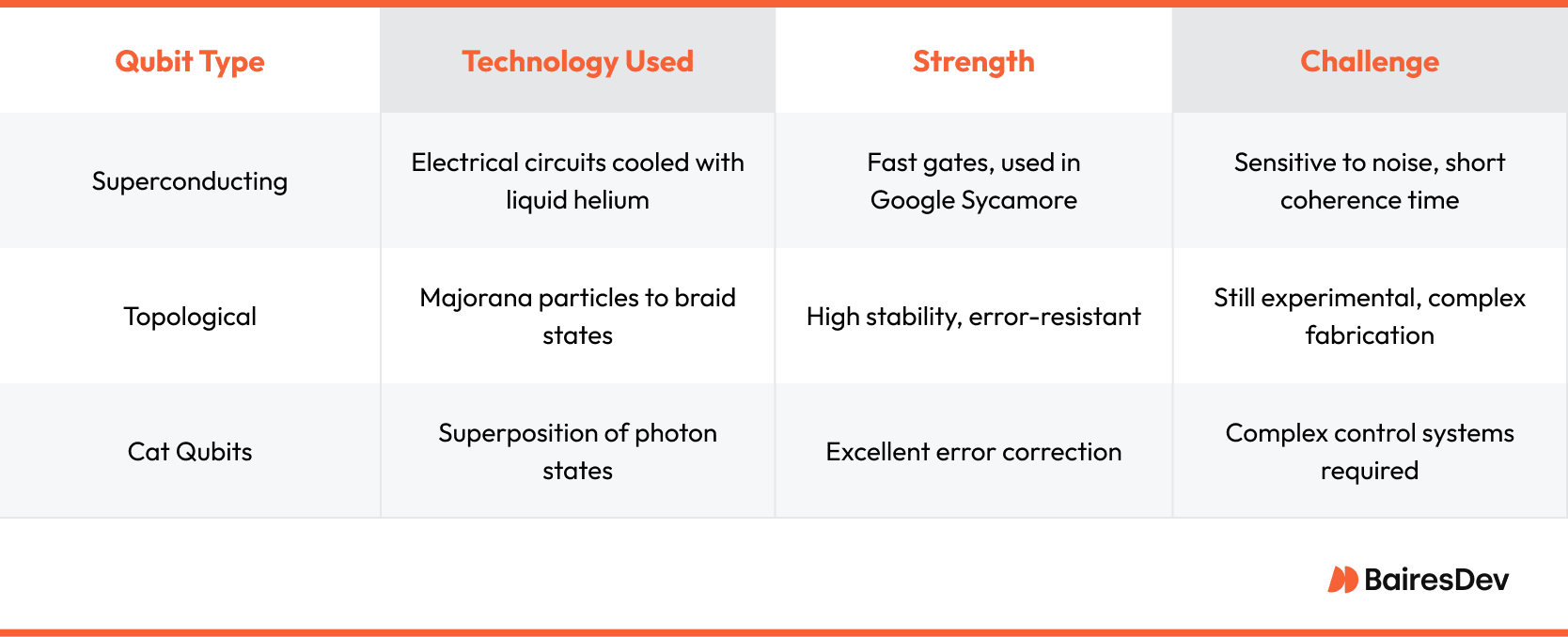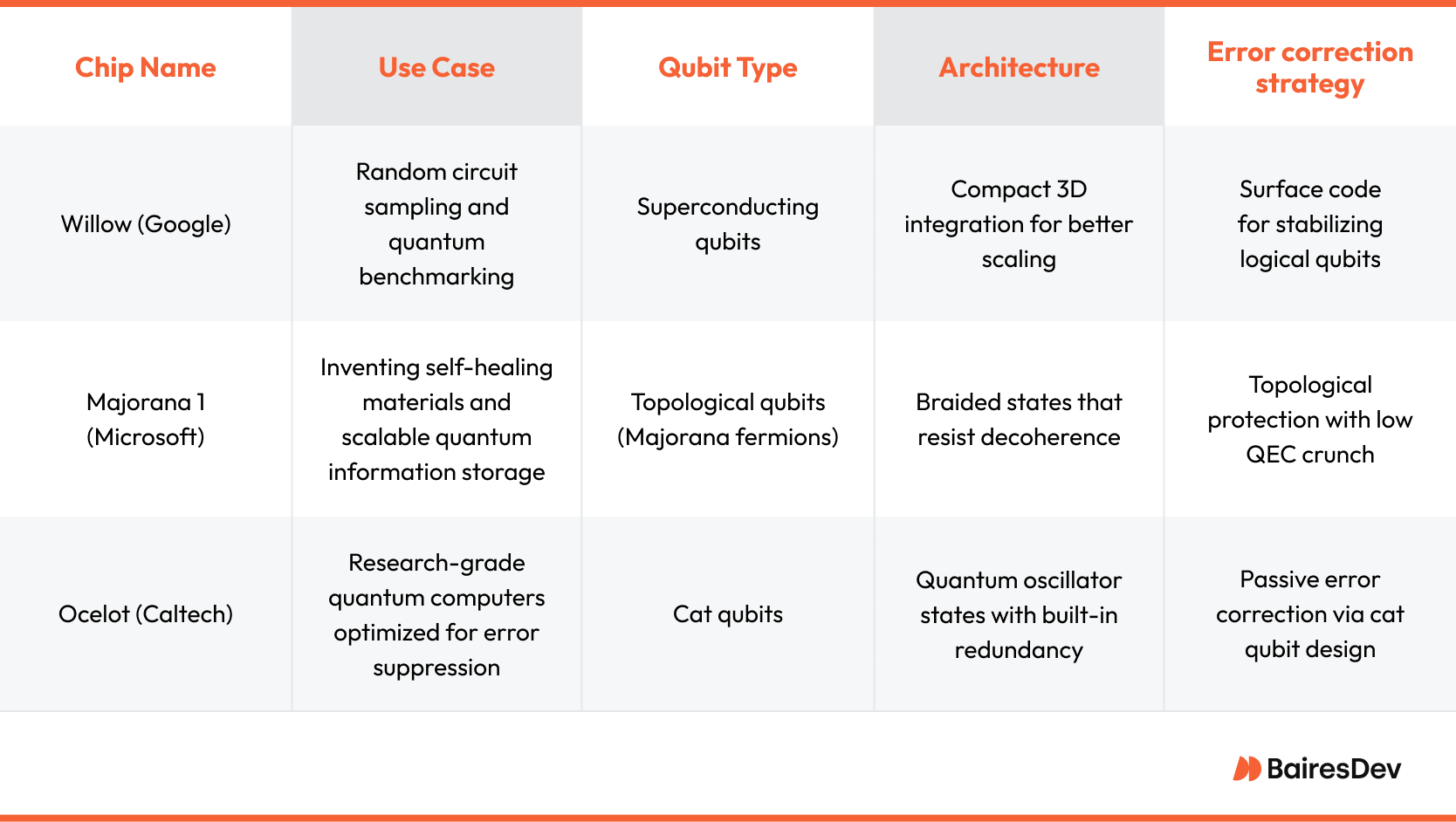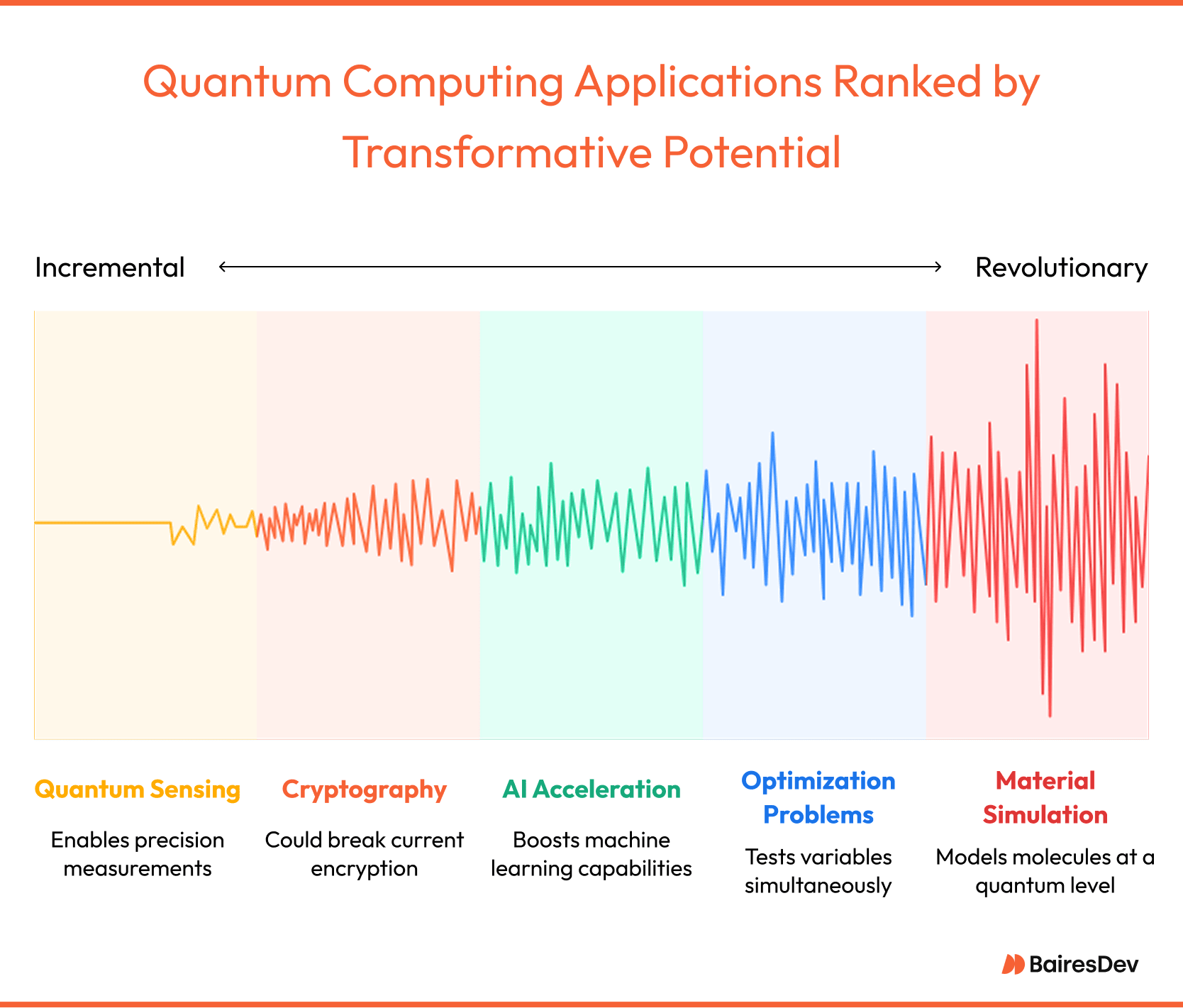A quantum chip isn’t Schrödinger’s cat. It’s Schrödinger’s server rack. Cold. Fragile. Built for one thing: computing with uncertainty. And that’s no small thing. In the right hands, a quantum computing chip can tackle problems conventional computers simply weren’t designed to solve.
But let’s be clear. Quantum computers aren’t here to replace your ThinkPad or MacBook. They’re here to work alongside it by assisting in cryptography, chemistry, and other real-world solutions that require the strange power of quantum mechanics.
This is the world David Deutsch saw coming, where quantum algorithms and error correction shape the next era of computing. Today’s engineers are using Caltech’s cat qubits to keep these fragile quantum systems stable long enough to matter. This is the frontier of quantum computation. Hard science. High risk. And a new quantum chip could change everything.
What Is a Quantum Chip?
A quantum chip is the engine of a quantum computer. Instead of using electrical signals like classical computers, a quantum computing chip processes information using quantum bits, or qubits. They follow the strange rules of quantum mechanics and work differently than traditional storage bits.
As Scott Aaronson famously said, a quantum chip won’t replace your laptop, but it could help crack problems that used to take centuries.
Conventional computers store data in bits, as 0 or 1. A quantum chip uses qubits, which can exist in multiple quantum states at the same time. This is called superposition. With superposition, a single qubit can process exponentially more quantum information than a bit ever could.
Superposition lets quantum hardware handle problems with countless variables. Think of it like having every possible path open until measurement forces a decision. This ability fuels the scientific discovery potential of quantum technology, from cryptography to materials science. Quantum computers capable of solving complex problems have long been the stuff of science fiction, but recent advances in quantum chip design could make them a reality.
Entanglement and Decoherence
Entanglement lets quantum computers connect qubits in ways classical computers can’t replicate. Change one qubit’s quantum state, and its entangled partner reacts instantly — no matter the distance. This strange behavior allows quantum computation to solve problems involving optimization and search with incredible speed.
But quantum error correction is critical because qubits are fragile. Noise from their environment can cause decoherence, or the loss of their delicate quantum states. Without strong error correction, the benefits of quantum computing vanish. This is the daily battle of every qubit wrangler managing today’s quantum processing units.
Types of Qubits: The Building Blocks

Quantum innovation depends on these technologies evolving. Google’s Sycamore chip achieved quantum supremacy with superconducting qubits. Caltech’s Ocelot chip uses cat qubits to go cat-mode, suppressing errors more effectively. Topological qubits, still under development, could deliver the ultimate in stable quantum systems.
Quantum Hardware Showdown: Willow vs Majorana vs Ocelot
Three quantum computing giants are racing ahead, each with a distinct strategy for building the future of quantum computers. Google, Microsoft, and Caltech aren’t just chasing speed — they’re focused on stability, quantum error correction, and solving real-world problems faster than classical computers. These chips are more than just tech — they’re case studies in quantum innovation.

Google’s Willow chip taps superconducting qubits for blistering speed in random circuit sampling but hits scaling limits fast. Microsoft’s Majorana 1 bets on topological qubits for error-resistant stability, while Caltech’s Ocelot uses “cat qubits” to keep quantum states intact.
Each new quantum chip breaks ground toward practical, powerful quantum computing.
When Does a Quantum Chip Actually Help?
Not every problem needs quantum computers. In fact, most tasks run better on classical systems. More qubits don’t guarantee better performance. Only the right kind of problem does.

Caltech’s research shows quantum computers aren’t replacing classical ones, but leapfrogging them to tackle targeted, once-impossible problems with real-world impact.
- Optimization Problems: Quantum computing can test countless variables simultaneously to find the best solution, like logistics or financial modeling.
- Cryptography: Algorithms like Peter Shor’s breakthrough could crack encryption using the properties of many qubits working together.
- Material Simulation: Modeling molecules at a quantum level helps in drug discovery, self-healing materials, and new energy sources.
- Artificial Intelligence Acceleration: Quantum mechanics can boost machine learning by handling high-dimensional data structures faster.
- Quantum Sensing: Precision measurements that detect gravitational waves or magnetic fields — think outer space research or advanced imaging.
When Classical Computers Are Better:
- Email and Office Tasks: A basic unit of productivity still runs better on conventional processors.
- Web Browsing and Gaming: Adding more qubits won’t speed up your next video game.
- Simple Calculations: Unless there’s a new state of matter involved, most math problems don’t need quantum computing.
How Google and Microsoft Envision Quantum Computing
Google’s Sycamore chip partners with servers instead of replacing them. Its unique properties shine in narrow tasks like random circuit sampling, where a mind boggling number exceeds what a classical system can handle. The California Institute partnership with Google lends credence to this hybrid workflow model.
Microsoft’s Azure Quantum platform excels at algorithm-hybridizing. It merges classical and quantum processes. Here, quantum computing doesn’t run solo. The cloud runs the in-house heavy lifting while quantum algorithms focus on optimization or encryption problems that would be extremely challenging for any classical processor.
Going Cat-Mode: Why Error Correction Matters
Nothing feels better in quantum computing than watching your fragile quantum chip stay stable long enough to deliver accurate results. That’s why engineers at Caltech’s Ocelot Chip project are going cat-mode. They’re using cat qubits to suppress errors that could wreck even the most advanced quantum computers.
Quantum processors are powerful but painfully fragile. Tiny disturbances in the environment knock qubits out of alignment and corrupt their unique properties. Without quantum error correction, a quantum computer turns into little more than expensive physics lab equipment.
Because qubits interact based on probability, error suppression strategies are critical to getting reliable, known timescales for operations. Engineers need to stabilize the system long enough for accurate results, often measured in milliseconds.
Error Correction Strategies: Trade-offs

What Quantum Chips Won’t Do for You
You won’t speed up Netflix. You won’t check email faster. If you’re hoping a new chip will turn your laptop into a magic box, you’re spin-flipping into disappointment. Quantum computing complements systems for solving rare problems, but it doesn’t replace them.
Most tasks you do every day run perfectly on classical computers. Quantum chips excel only in narrow lanes like encryption, optimization, or simulating molecules. The path to accurate results in quantum computing isn’t paved with brute force, but with patience, precision, and engineering.
Each quantum processing unit has to operate within timescales that measure stability in the milliseconds before qubits decohere. Even then, scaling these systems takes years, not decades. That’s why experts like Michelle Simmons focus on silicon-based quantum CPUs. They leverage the unique properties of quantum states while remaining grounded in realistic progress.
Quantum Fit Score: How to Know if Your Problem Is Quantum-Friendly
Over 90% of computing tasks run better on classical computers. Quantum computers thrive in that rare 10%, like solving problems too big, too messy, or too complex for traditional systems. Knowing whether your problem fits is critical. Find that fit before you risk teleport-lag between quantum processors and classical systems.

Qubit Wrangler Life: What Engineers Actually Do
Imagine a qubit wrangler at Caltech’s Ocelot Chip lab leans back after a 14-hour day. No wavefunction crash. No circuit jank. The new chip held stable, delivering clean data. That’s a rare win and a major breakthrough in a world where tuning quantum tech feels like balancing spinning plates in a vacuum.
Building quantum computers isn’t glamorous. It’s slow, technical work where engineers guide fragile qubits toward delivering information simultaneously — before time runs out.
- Tuning Qubits: Qubit wranglers adjust electromagnetic fields and pulse sequences to align each qubit’s unique properties within the system’s noise limits.
- Minimizing Noise Budget: Engineers fight environmental interference and material imperfections to prevent circuit jank. They verify accurate results within years not decades of viable scaling.
- Designing Quantum Gates: Teams build logical operations that control quantum tech, maximizing the ability to process information simultaneously without triggering a collapse point.
- Testing Error Correction: Working with systems like IBM Q System One, engineers experiment with quantum error correction codes that allow the new chip to keep coherence long enough for real quantum computation.
- Managing Hybrid Systems: They deal with the teleport-lag of moving data between classical systems and fragile qubits, timing operations to avoid decoherence.
Real Tools, Real Progress: Where to Learn More
If you want to really understand quantum computers, you’ve got to get your hands dirty. No article can replace the feeling of working with real quantum tech. Luckily, the community has built incredible resources for curious developers.
- Qiskit: IBM’s open-source toolkit for programming quantum computers. It’s a real-world playground for testing algorithms on classical computers and real qubits.
- Quantum Country: An interactive textbook that uses spaced repetition to help you memorize core quantum computation concepts and theory faster.
- GitHub Repositories: Explore open-source code from IBM, Rigetti, and others to understand the architecture of quantum computers.
- Lectures: Watch Brian Greene’s videos on entangled states, or lectures from Peter Shor, John Preskill, and Scott Aaronson. These thought leaders break down the complex science of quantum systems with clarity.
- Microsoft Azure Quantum: Their hybrid platform shows how quantum computers and classical CPUs work together without the teleport-lag of disconnected systems.
Quantum isn’t just theory anymore. These tools let you move past the hype and avoid getting stuck in quantum spaghetti. It’s about turning curiosity into real-world skill.
Power Within Limits
Quantum chips aren’t magic wands. They’re precision tools built for solving problems classical computers can’t touch. Systems like IBM Q System One prove that quantum hardware delivers breakthrough performance, but only in the right scenarios.
You don’t need to go full decoherence to be part of the quantum computing future. The real opportunity is in learning when to use these tools and when to stay grounded. Stay curious. Stay practical. And leave the quantum spaghetti for those specialized tasks that demand it.
Quantum’s future isn’t hype. It’s happening. One qubit, one algorithm, one solution at a time.






